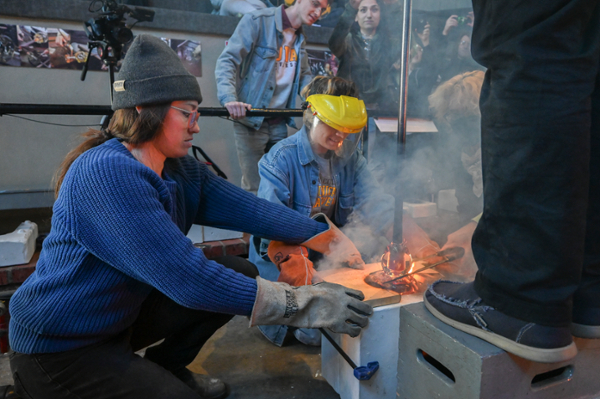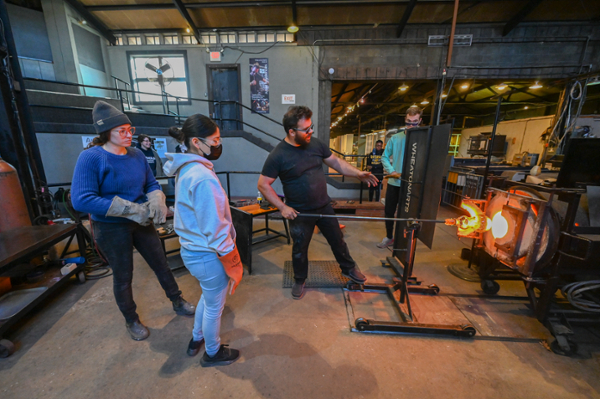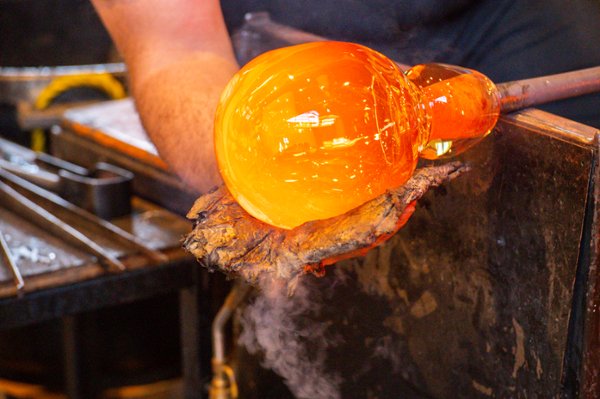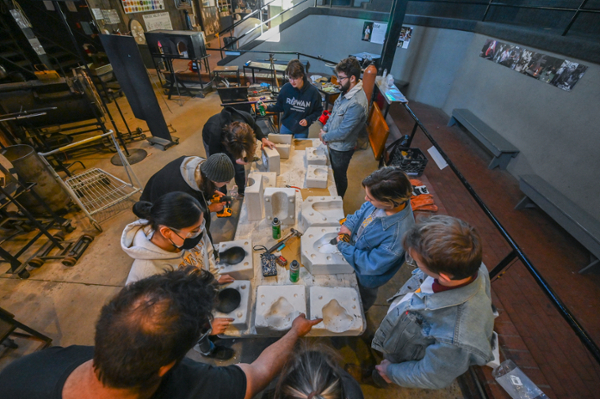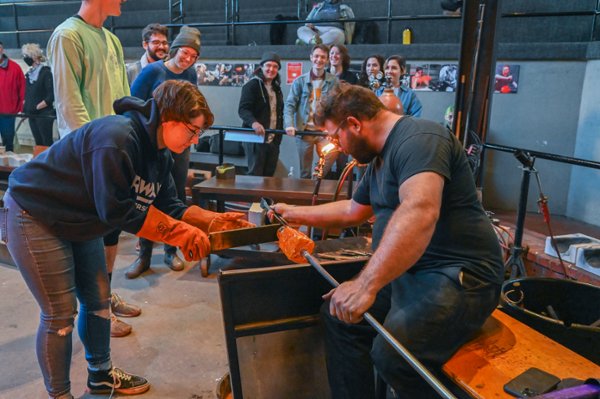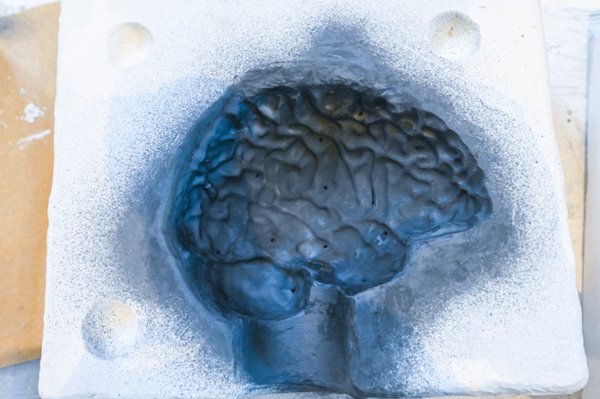Combining 3D printing with traditional glassblowing, art students redefine the “vessel”
Combining 3D printing with traditional glassblowing, art students redefine the “vessel”
A brain. A backpack. A soundwave.
Think they have nothing in common? Think again.
On Nov. 19 Art Department Lecturer Emily Baker in the Ric Edelman College of Communication & Creative Arts took 17 students to WheatonArts, the historic glassmaking complex in Millville, to apply 21st Century digital sculpting techniques to traditional glassblowing.
The results were stunning, a lesson in possibility and creativity.
Sound in a bottle
Like all of the students, Daija McNeil, a senior studio art major from Willingboro, developed an idea for a vessel, the definition of which was up to them, designed it digitally, 3d printed it, then cast a mold around the object to capture molten glass.
“I’m creating a soundwave of my best friend’s voice,” McNeil said.
Soundwaves ebb and flow like surf in the ocean, but, by definition, cannot be seen by the human eye.
“I wanted to take something you don’t see visually into a 3D aspect,” McNeil said. “It’s like a tunnel, with peaks and valleys.”
McNeil’s unique approach to the assignment well-represented the class in general, Baker said.
“I try to push concept,” she said about the course, Digital Sculpture: Explorations in Craft and New Technologies. “Lots of times students have the idea but then we have to make sure it fits.”
Glassmaking in the “hot shop”
Amid the first snap of autumn cold, students in sweatshirts and knit caps moved about the giant brick furnace inside the WheatonArts Glass Studio’s “hot shop,” drilling holes in the plaster and silica molds they made on campus, a final step in preparing them for the bolus of molten glass that a skilled craftsman would fill them with, then blow into to take their form.
Baker said some of the objects from which the casts were made took 24 hours or more to 3D print, a technology that involves computer-aided design to produce three-dimensional objects in plastic.
“One challenge was that many students have never made a mold before,” Baker said. “You can teach about it, but until they do it they don’t quite learn.”
Baker, whose background is in the foundry – casting metals – said she too was somewhat new to 3D printing but she and her students embraced it.
“We’re applying new technology to traditional techniques – metal casting and glassblowing,” she said.
To fund the program, including use of the WheatonArts hot shop, glass making materials and to pay its staff, Baker secured a STORI Fund grant through the Edelman CCCA. She hopes her class expands collaboration between Rowan, itself the product of a historic glassmaking town, and WheatonArts.
Nicholas Kreuz, a senior electrical and computer engineering major from Quakertown, Pa., said he took the class as an elective and it’s challenging him to think in creative new ways. His vessel: a life-sized human brain that’s composed from hundreds of MRI “slices” taken from an open-source MRI scan.
“Our concept was to create a vessel and I took that to mean the brain as a vessel of information but it’s also going to be a physical vessel,” Kreuz said.
Bag it
For art education junior Gabby Kennedy, the challenge to create a vessel led to her casting a back pack with a glass bag that she’ll attach to cloth straps. Once complete, she’ll find a used thrift store teddy bear to inhabit the sack.
“It’s supposed to represent our memories that we carry around, but so fragilely. They’re the most important things we have,” Kennedy said.
As for using a thrift store bear, Kennedy said a new one couldn’t work.
“I want it to be dingy and kind of beat up,” she said. “Something brand new would have no story to it.”
